- Home Page
- Kite Plans
- Barn Doors
Barn-Door-Kite Plans
For All the MBK Barn Doors
These barn-door-kite plans and hints are aimed at summarizing the more in-depth instructions to be found in the How To Make A Kite section of this website.
For each of the barn-door plans below, there are also a pair of plan-view photos.
The one on the left is of the front surface. That is, the side of the kite which faces the flier. The other photo is of the back surface, which exposes the spars.
For all three designs, attach flying line to the bridle with a shiftable knot for later trimming. Also, all three designs work well with light single-ply plastic for sail material. Many large plastic bags are suitable.
On this site, there's more kite-making info than you can poke a stick at. :-)
Want to know the most convenient way of using it all?
The Big MBK E-book Bundle is a collection of downloads—printable PDF files which provide step-by-step instructions for many kites large and small.
That's every kite in every MBK series.
Dowel Barn-Door-Kite Plans
Plan-View Photos
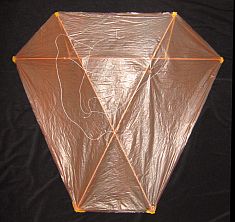 Front
Front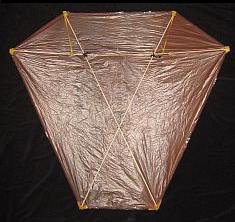 Back
Back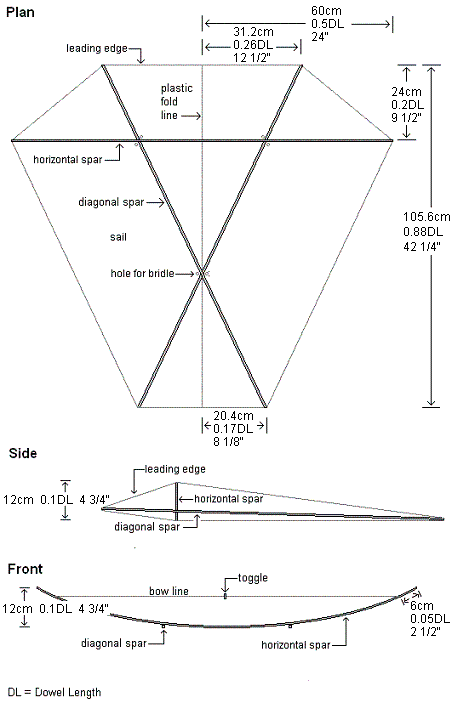
Tips and Hints
- For a dowel length of 120 cm (48 in.), 5 mm (3/16 in.) dowel works well.
- Reinforce the sail edges by adding nearly the full width of clear sticking tape inside the outline then trimming back to the outline.
- Secure the sail to each spar end using two short lengths of electrical insulation tape. One length goes over and around the tip, the other at 90 degrees to the first tape, with corners folded back under the sail.
- For the upper bridle loop and lower bridle lines, try lengths about 1.5 times the length of the horizontal spar.
- At the bridle attachment points, a Single-Wrap Slip knot should be sufficient, secured with a spot of glue. For this design, they also serve to lash the spars together.
- No tail is required for this kite.
The photo below shows our very first Dowel Barn Door, which was later improved in several ways. However, both versions looked very similar from a distance, since the sail shape was unchanged.
 A rather versatile and reliable kite when trimmed correctly
A rather versatile and reliable kite when trimmed correctly
2-Skewer Barn-Door-Kite Plans
Plan-View Photos
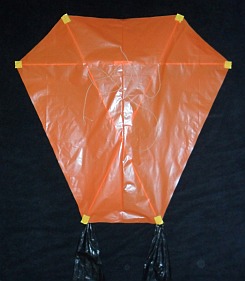 Front
Front Back
Back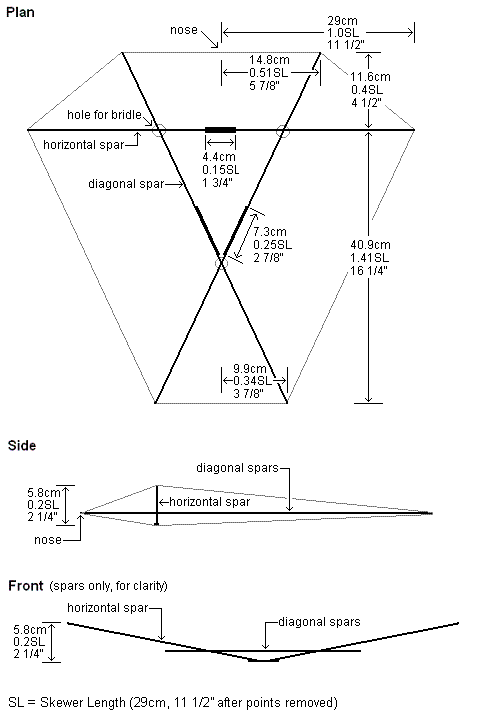
Tips and Hints
- Reinforce the join in the middle of each diagonal spar with a length of skewer, 0.25 SL (7.3 cm, 2 7/8 in.) long, glued to one side of the join as in the plan.
- Reinforce the join in the middle of the horizontal spar with two lengths of skewer, 0.15 SL (4.4 cm, 1 3/4 in.) long, glued to each side of the join as in the plan. The short pieces of bamboo stay flat on the table.
- Reinforce the sail edges by adding clear sticking tape over the outlines then trimming back to the outlines.
- Secure the sail to the spar ends using short lengths of electrical insulation tape.
- Try a length of bridle line about 2.0 SL (58 cm, 23 in.) long, to tie between the two upper attachment points. In each case use a Single-Wrap Slip knot, secured with a spot of glue.
- Use another a length of bridle line about 2.0 SL (58 cm, 23 in.) long, to tie between the upper bridle loop and the lower attachment point.
- For a start, try making a single tail about 12 SL (350 cm, 140 in.) long, with each end tied to the bottom end of a diagonal spar, forming a loop.
The photo below shows this latest MBK 2-Skewer Barn Door with its loop tail of black garbage-bag plastic:
 A looped tail is compact but does the job really well
A looped tail is compact but does the job really well
1-Skewer Barn-Door-Kite Plans
Plan-View Photos
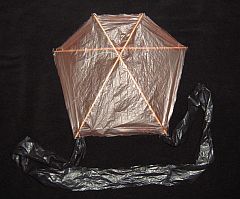 Front
Front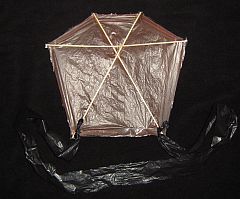 Back
Back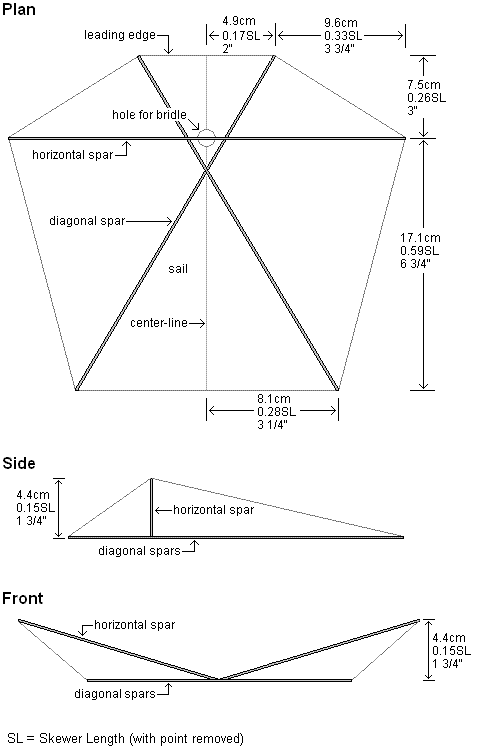
Tips and Hints
- 30 cm (12 in.) bamboo BBQ skewers work well as spars. I work with 1 SL = 29 cm (11 1/2 in.).
- Secure the sail to the spar ends using short lengths of clear sticking tape.
- After cracking the bamboo to get the dihedral angle, use a generous drop of wood glue to hold the dihedral angle firmly.
- Use drops of wood glue to secure the skewers where they cross each other.
- Try a length of bridle line, about the length of one skewer, tied to the middle of the horizontal spar. Let half hang out the front of the sail and the other half out the back. Secure with a small drop of glue. The kite can now be easily included in a kite train.
- For a start, try making a single tail about six times as long as a skewer, with each end tied to the bottom end of a diagonal spar, forming a loop.
- Add a couple of strips of clear sticking tape all along the trailing edge of the sail. The extra weight here makes the kite more stable.
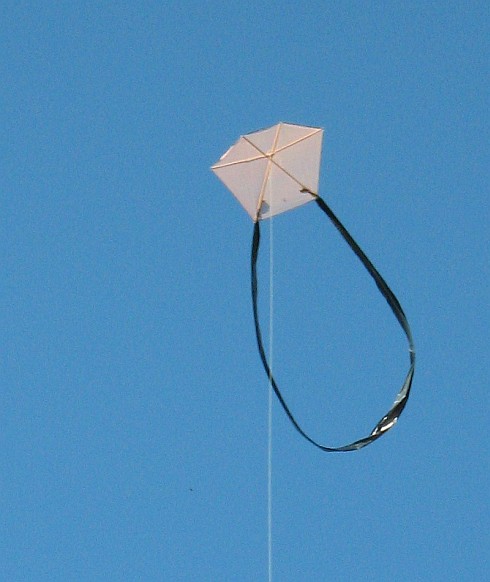 Little barn-doors need plenty of dihedral
Little barn-doors need plenty of dihedral
Out in the Field
Barn-door kite stories of my real-life flying experiences are worth checking out!
Illustrated with photos and videos, of course.
I hope one of these barn-door-kite plans is just right for you!
As mentioned earlier, there's more kite making on this site than you can poke a stick at. :-)
Want to know the most convenient way of using it all?
The Big MBK E-book Bundle is a collection of downloads—printable PDF files which provide step-by-step instructions for many kites large and small.
That's every kite in every MBK series.
